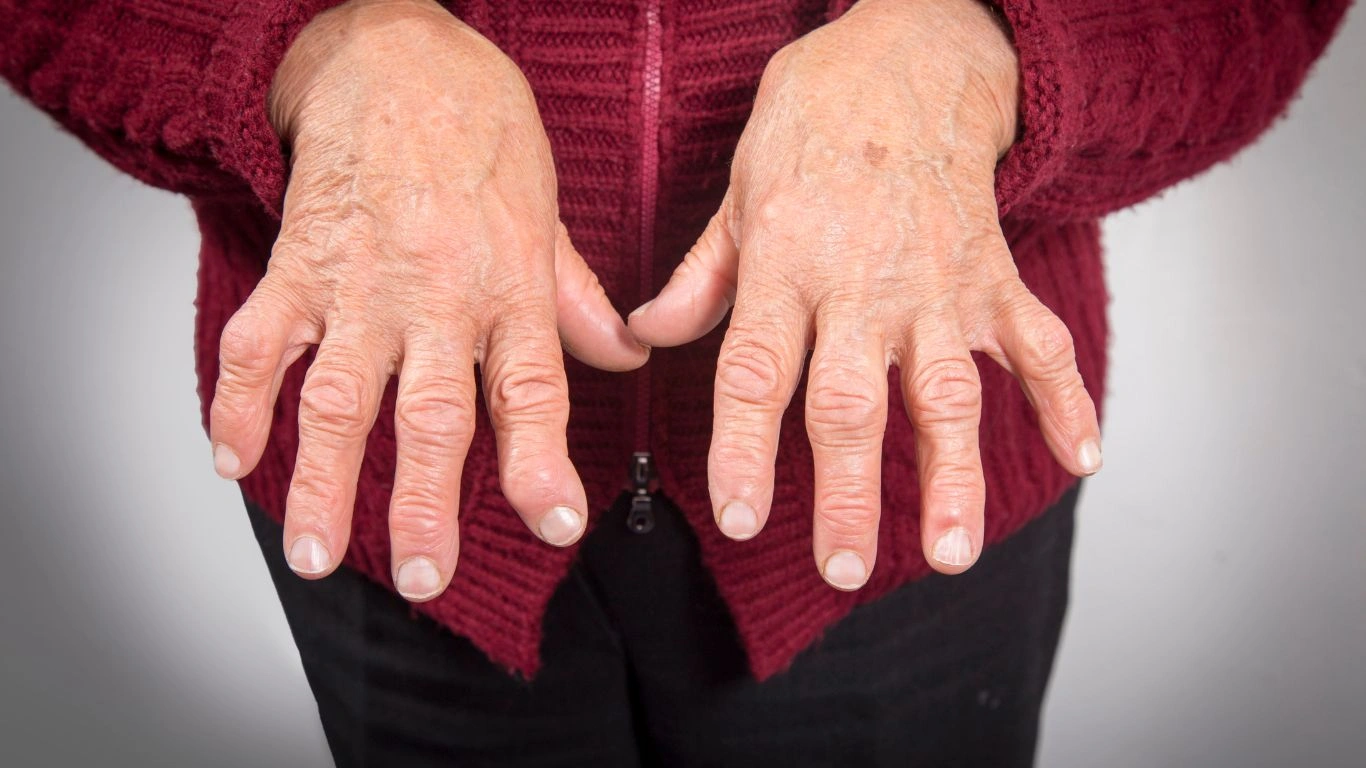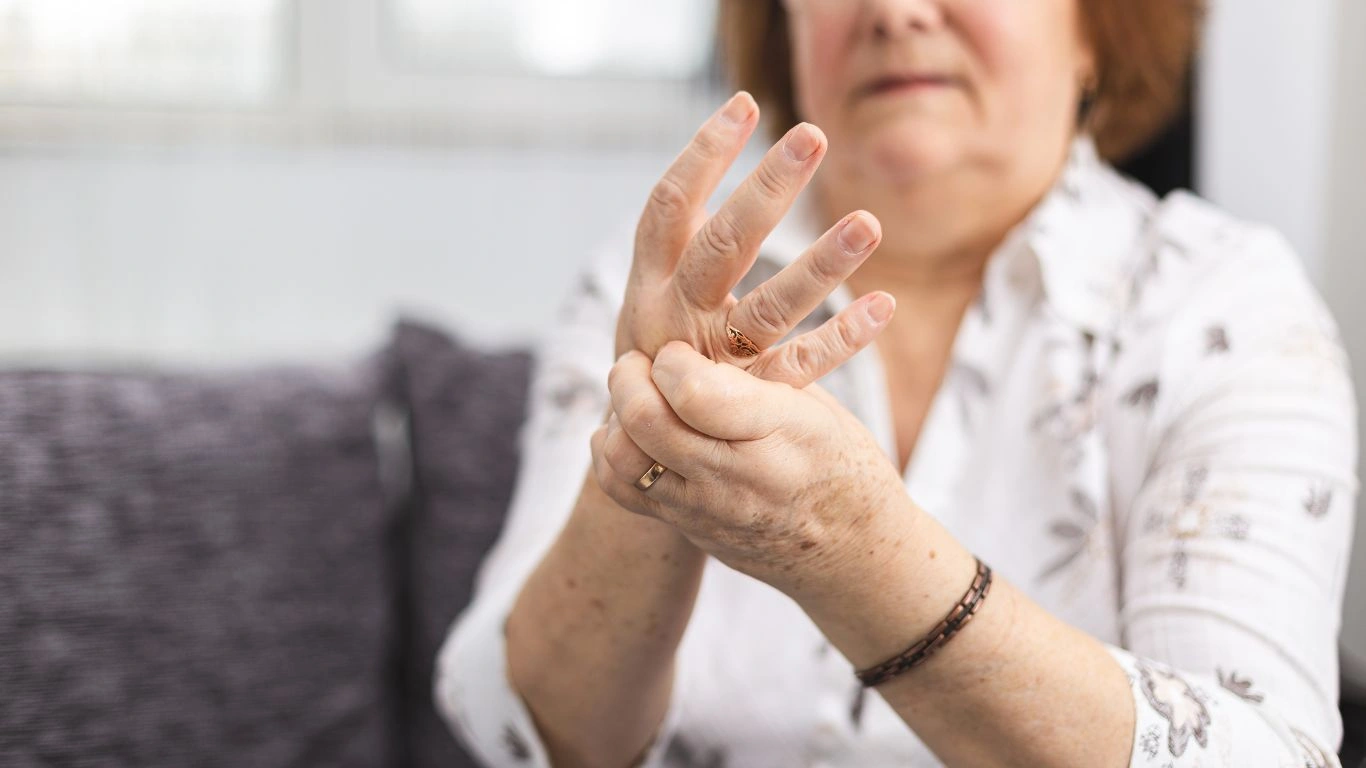Affordable Rheumatoid Arthritis Treatment Options for Better Quality of Life
Rheumatoid arthritis (RA) is a chronic inflammatory disease that affects millions of people worldwide. As someone who has spent years diagnosing, treating, and helping individuals manage this condition, I understand the challenges it can bring. It’s not just about the physical pain; the emotional toll and the uncertainty can make things even harder. One of the most important aspects I always emphasize is finding affordable treatment options that work for each person. In my experience, the right combination of treatment, lifestyle changes, and support can significantly improve quality of life. This article will walk you through some of the most effective and affordable treatment options for rheumatoid arthritis that I’ve seen help so many people live better lives despite the challenges RA brings.
What is Rheumatoid Arthritis?

Before diving into treatment options, it’s important to understand what rheumatoid arthritis is and why it happens. RA is an autoimmune disease that causes inflammation in the joints, leading to pain, swelling, and, over time, joint damage. Unlike osteoarthritis, which is caused by wear and tear on the joints, rheumatoid arthritis occurs when the body’s immune system mistakenly attacks its own tissues, specifically the synovium (lining of the joints). This inflammation can spread to other parts of the body, causing fatigue, fever, and sometimes even damage to organs.
Understanding the Impact of RA on Daily Life
If you or someone you know has rheumatoid arthritis, you’re likely familiar with the daily struggles. The pain and stiffness can be debilitating, and even simple tasks like holding a cup of coffee or getting dressed can feel like a challenge. It’s not just the physical aspect, though. The emotional toll of living with chronic pain, the uncertainty of flare-ups, and the frustration of navigating the healthcare system can feel overwhelming.
Over the years, I’ve worked with countless patients who struggle with these same issues. Many of them have shared how isolating it can feel, and the anxiety of worrying about the future. However, the good news is that there are treatments available that can help manage symptoms, reduce inflammation, and slow the progression of the disease. The key is finding a treatment plan that fits your individual needs and budget, which leads me to the next important point: affordable treatment options.
Affordable Treatment Options for Rheumatoid Arthritis

When you’re dealing with a chronic condition like rheumatoid arthritis, the cost of treatment can become a major concern. Prescription medications, therapies, and doctor visits can add up quickly, and not everyone has the financial means to cover these costs. That’s why it’s essential to explore treatment options that are both effective and affordable. Below, I’ll discuss some of the most affordable options I’ve seen work well for managing RA.
1. Over-the-Counter Medications
While prescription medications like DMARDs (disease-modifying antirheumatic drugs) and biologics are often necessary for more severe cases of RA, over-the-counter (OTC) medications can be a good starting point for managing mild to moderate symptoms. Nonsteroidal anti-inflammatory drugs (NSAIDs) like ibuprofen or naproxen can help reduce pain and inflammation. These medications are widely available, affordable, and can be used as part of a broader treatment plan.
It’s important to note that while these drugs can help relieve symptoms, they don’t address the underlying cause of rheumatoid arthritis. However, for those looking for cost-effective ways to manage flare-ups, OTC medications can be a useful tool. Always consult with your doctor before starting any medication, even if it’s available without a prescription, to ensure it’s safe for you and won’t interfere with any other treatments you’re using.
2. Physical Therapy and Exercise
One of the most underrated yet effective ways to manage rheumatoid arthritis is through regular physical therapy and exercise. A physical therapist can teach you how to safely move your joints, strengthen muscles, and reduce stiffness. I’ve seen time and again how people who commit to physical therapy sessions experience reduced pain and an improved range of motion.
Incorporating exercise into your routine can also help manage RA symptoms. Simple activities like walking, swimming, or gentle stretching can make a huge difference in how your body feels. Exercise helps to maintain joint function, improve circulation, and reduce stress, which is crucial when managing chronic conditions like RA. Best of all, physical therapy and exercise are relatively low-cost and can be done at home with minimal equipment.
Holistic Approaches to Managing RA
In addition to conventional medical treatments, many individuals with rheumatoid arthritis find relief through holistic approaches. These methods are often cost-effective and focus on treating the whole body, not just the symptoms. Some of these approaches have even been shown to complement traditional medical treatments, leading to better overall outcomes. Below are a few holistic methods that can help manage RA:
1. Anti-Inflammatory Diet
What you eat can have a significant impact on your rheumatoid arthritis symptoms. An anti-inflammatory diet rich in fruits, vegetables, whole grains, and healthy fats (like those found in olive oil and fatty fish) can help reduce systemic inflammation in the body. Certain foods like ginger, turmeric, and green tea have natural anti-inflammatory properties and may provide additional benefits. While changing your diet may not completely eliminate RA symptoms, it can definitely play a role in reducing inflammation and improving overall health.
2. Supplements
Some people with RA find relief from certain supplements, like omega-3 fatty acids, vitamin D, or turmeric extract. These supplements have been shown to have anti-inflammatory effects and may help support joint health. However, it’s essential to consult with a healthcare professional before starting any supplement regimen to ensure it won’t interfere with your current medications.
Supplements are generally more affordable than prescription medications, and they can be a useful addition to a treatment plan. However, they should not be seen as a replacement for conventional treatments—rather, they can be used to complement them.
3. Stress Reduction Techniques
Stress can exacerbate the symptoms of rheumatoid arthritis, so it’s important to find ways to manage it. Techniques like deep breathing, yoga, meditation, or even just taking time to relax can help reduce the negative effects of stress on your body. These techniques are not only good for your mental health but also help reduce inflammation in the body. The best part? Many of these stress-reduction practices are completely free or very low-cost.
Incorporating Affordable Treatments into Your Routine
When dealing with rheumatoid arthritis, it’s crucial to develop a treatment plan that works for you and your budget. By combining affordable treatment options like OTC medications, physical therapy, and holistic approaches, you can effectively manage your symptoms and maintain a better quality of life. The key is consistency, staying informed, and being open to trying different methods to see what works best for your unique situation. As someone who’s worked with so many individuals living with RA, I can tell you that a proactive approach to treatment is one of the most important steps you can take.

While we’ve covered some affordable treatments in the previous section, sometimes rheumatoid arthritis requires more intense intervention. This is where prescription treatments come into play. From DMARDs (disease-modifying antirheumatic drugs) to biologics, these medications can significantly impact how RA is managed. But let’s be honest: medications like these can be expensive, and many people simply can’t afford them without insurance or assistance programs.
Throughout my years working with RA patients, I’ve seen firsthand the frustration that comes with the high cost of medications. It can feel like an obstacle between you and a better quality of life. However, there are ways to navigate the costs and still access the treatments that can make a difference. I’ve helped my patients explore a variety of options, from patient assistance programs to discount cards, that can help lower the financial burden. Below, I’ll walk you through some of the most common prescription treatments and share how to manage the costs effectively.
1. DMARDs: The Backbone of RA Treatment
Disease-modifying antirheumatic drugs, or DMARDs, are often the first line of defense when it comes to treating rheumatoid arthritis. They work by targeting the underlying immune system dysfunction that causes the inflammation and damage in RA. Methotrexate is probably the most commonly known DMARD, and it’s typically prescribed at the start of treatment. While methotrexate is generally affordable, some people experience side effects that may require switching to a different drug.
In my experience, while DMARDs are effective, the cost can still be a concern. Some generic versions of DMARDs are affordable, but brand-name options can add up. For patients worried about the costs, I always recommend checking with the manufacturer for patient assistance programs, which can offer significant discounts or even free medications for eligible individuals. It’s worth doing a little research or asking your healthcare provider about options like this—they really can make a difference.
2. Biologics: Targeted Treatments for Severe RA
For those with more severe rheumatoid arthritis, biologic drugs are often the next step. Biologics are a newer class of medications that work by targeting specific parts of the immune system involved in the RA process. These medications are incredibly effective at reducing inflammation and slowing the progression of joint damage, but they come at a price. Some biologics can cost thousands of dollars per month, making them unaffordable for many people without insurance coverage or financial assistance.
Here’s where I’ve seen creative solutions come into play. Many patients I’ve worked with have accessed patient assistance programs directly from the pharmaceutical companies that produce biologics. These programs often provide medication at a reduced cost or for free, depending on income level and insurance status. If you’re considering biologic treatments, I highly recommend reaching out to the manufacturer’s website or speaking with your healthcare provider about the resources available. Many patients I’ve worked with have found that they qualify for these programs, which can make biologics more affordable than you’d think.

Alternative Therapies: Natural and Complementary Options
When it comes to managing rheumatoid arthritis, the options aren’t limited to just conventional medications. Many patients I’ve worked with have explored alternative therapies to complement their treatment plan, and some have found significant relief through these methods. I always emphasize a holistic approach, one that combines traditional treatments with natural options, as it’s important to treat both the body and the mind when living with a chronic condition like RA.
Alternative therapies can be a game-changer when it comes to managing symptoms, and they often come at a much lower cost than pharmaceutical treatments. Below, I’ll highlight some of the most popular and affordable complementary therapies that have been shown to help with rheumatoid arthritis.
1. Acupuncture: Finding Relief Through Needles
Acupuncture is one of those alternative therapies that’s gained a lot of attention over the years, and for good reason. In my experience, many people with RA find acupuncture to be a helpful tool for pain management and reducing inflammation. The practice involves inserting very thin needles into specific points on the body to stimulate energy flow and promote healing. Studies have shown that acupuncture can help reduce pain and improve function in people with RA, and many patients I’ve worked with report feeling better after just a few sessions.
While acupuncture may not be as cheap as over-the-counter treatments, it’s often less expensive than prescription medications or biologics, especially if you find a local acupuncturist with reasonable rates. The key here is to be consistent with treatments. I’ve seen patients who commit to regular sessions experience significant improvements in pain management, which can lead to less reliance on pharmaceutical medications in the long run.
2. Hot and Cold Therapy: Simple Yet Effective
Sometimes, the best solutions are the simplest ones. Hot and cold therapy is a low-cost option that can help relieve pain and stiffness in the joints. The idea is to apply heat or cold to the affected area to reduce inflammation and improve circulation. Heat can relax tight muscles and alleviate stiffness, while cold packs can reduce swelling and numb the pain.
Over the years, I’ve seen many patients use hot and cold therapy as an adjunct to other treatments. It’s affordable and easy to implement at home, and the results can be remarkable. I recommend trying both methods to see what works best for you, and you don’t have to invest in expensive equipment—just a simple heating pad or ice pack can do the trick. Some people even use frozen peas or towels soaked in hot water if they don’t want to purchase specialized products. The beauty of hot and cold therapy is that it’s customizable and accessible to everyone.

3. Herbal Remedies: Nature’s Healing Touch
Herbal remedies have been used for centuries to treat various health conditions, and rheumatoid arthritis is no exception. Some herbs, like turmeric and ginger, have powerful anti-inflammatory properties that can help reduce the symptoms of RA. I’ve seen many patients incorporate these herbs into their daily routine, whether in the form of supplements, teas, or even as part of their cooking. While they may not replace traditional medications, they can provide additional relief.
Turmeric, in particular, has been widely studied for its anti-inflammatory effects. The active ingredient in turmeric, curcumin, has been shown to inhibit inflammatory markers in the body, which is particularly helpful for conditions like RA. You can find turmeric supplements in most health food stores, or you can add it to your meals for a natural boost. Similarly, ginger is another powerful herb that has been shown to reduce inflammation and pain in joints, making it an excellent natural addition to an RA treatment plan.

Final Thoughts on Finding Affordable Treatment Options
Living with rheumatoid arthritis doesn’t have to mean breaking the bank. While the cost of medications and treatments can be daunting, there are plenty of affordable options available to help manage the disease. From over-the-counter medications and physical therapy to alternative therapies like acupuncture and herbal remedies, there are a variety of ways to manage RA effectively without spending a fortune.
As someone who’s spent years working with individuals living with rheumatoid arthritis, I know that the key is finding a treatment plan that works for you—one that fits your budget, lifestyle, and personal preferences. There’s no one-size-fits-all solution, but with a little creativity and a proactive approach, you can find a way to live well with RA. Keep exploring, stay informed, and never be afraid to ask for help. You’re not alone in this journey, and there’s a whole network of support and resources out there to help you along the way.
Case Studies & Real-Life Examples
Sometimes, the best way to understand the impact of affordable rheumatoid arthritis treatments is through real-life stories. As a rheumatoid arthritis expert, I’ve had the privilege of working with many individuals who have made remarkable progress in managing their condition, even on a budget. These stories not only highlight the effectiveness of affordable treatment options, but they also serve as a reminder that there’s hope, no matter your financial situation. Below, I’ll share a few examples of patients I’ve worked with who found ways to manage their rheumatoid arthritis without breaking the bank.
1. Emma’s Journey: Turning to Physical Therapy and Diet
Emma, a 42-year-old teacher, was diagnosed with rheumatoid arthritis after several months of unexplained pain in her hands and wrists. Initially, her symptoms were mild, but over time, she began to experience joint swelling and stiffness that made it difficult to hold a pen or type on her computer. Emma’s doctor recommended prescription medications, but she was concerned about the cost and potential side effects. Instead, Emma decided to explore physical therapy and dietary changes as an alternative approach.
Through physical therapy, Emma learned exercises that helped strengthen her joints and improve her range of motion. She also made changes to her diet, incorporating more anti-inflammatory foods like salmon, leafy greens, and turmeric. Within a few months, Emma noticed a significant reduction in joint pain and stiffness. While she still occasionally uses over-the-counter pain relievers, her experience proves that with determination and the right support, you can manage RA effectively with a combination of affordable treatments.
2. John’s Story: Utilizing Prescription Assistance Programs
John, a 58-year-old factory worker, was diagnosed with rheumatoid arthritis several years ago. His RA was severe, and traditional over-the-counter medications didn’t provide enough relief. When his doctor recommended biologic drugs, John was worried about the costs. Biologics can be incredibly expensive, and John didn’t have the financial means to cover the high cost.
Instead of giving up, John researched patient assistance programs offered by the pharmaceutical companies that produced the biologics. With the help of his doctor, he was able to apply for financial assistance and qualify for a reduced cost on his medications. John now receives his biologic treatment for a fraction of the price, and his symptoms have improved drastically. His story is a testament to the power of persistence and the availability of programs that can help make prescription treatments more affordable.

Key Takeaways: What You Need to Remember
Living with rheumatoid arthritis can be a challenge, but it doesn’t have to be a financial burden. Here are some key takeaways that I’ve learned through my years of working with RA patients, and that I hope will help you as well:
- Don’t underestimate the power of affordable treatments. Over-the-counter medications, physical therapy, and lifestyle changes can go a long way in managing your symptoms.
- Prescription treatments may be necessary, but don’t let the cost deter you. There are assistance programs and discounts available to help you access medications without the high price tag.
- Natural and complementary therapies can provide additional relief. From acupuncture to herbal remedies, many RA patients find that these approaches work well in conjunction with other treatments.
- Consistency is key. Whether it’s taking your medication as prescribed, sticking to a healthy diet, or doing physical therapy exercises, staying consistent is one of the most important factors in managing RA.
- Explore your options. Every patient is unique, and what works for one person might not work for another. Take the time to explore different treatments, ask questions, and be your own advocate when it comes to managing your condition.
FAQs
1. Are over-the-counter medications effective for managing rheumatoid arthritis?
Over-the-counter medications like NSAIDs (ibuprofen, naproxen) can be effective for managing mild to moderate pain and inflammation in rheumatoid arthritis. However, they don’t address the underlying causes of the disease and should be used alongside other treatments for better long-term management. Always consult your doctor to ensure that OTC medications are safe and appropriate for you.
2. How can I afford biologic treatments for rheumatoid arthritis?
Biologic treatments can be expensive, but many pharmaceutical companies offer patient assistance programs to help reduce costs. These programs may provide medications at a discounted rate or even for free, depending on your financial situation. Speak with your healthcare provider about accessing these programs and explore other options like discount cards or generic alternatives.
3. Can I manage rheumatoid arthritis without prescription medications?
While prescription medications are often necessary to manage more severe cases of rheumatoid arthritis, many people with mild to moderate RA can manage their symptoms with over-the-counter medications, physical therapy, exercise, and lifestyle changes. It’s essential to work with your healthcare provider to develop a treatment plan that fits your individual needs.
4. Are natural remedies like turmeric and ginger effective for rheumatoid arthritis?
Natural remedies like turmeric and ginger have shown anti-inflammatory properties, and many people with rheumatoid arthritis find relief from incorporating these herbs into their diet. While they should not replace conventional treatments, they can be used as complementary therapies to help manage symptoms. Always check with your doctor before starting any new supplement or herbal remedy.
Bonus: Additional Resources or DIY Tips
Managing rheumatoid arthritis requires a comprehensive approach, and there are plenty of resources and DIY tips to help you along the way. Here are a few additional tools and strategies that have helped many of my patients:
- Online Support Groups: Connecting with others who understand what you’re going through can be incredibly helpful. Look for RA support groups on social media or health websites.
- Exercise at Home: There are many YouTube channels and apps dedicated to low-impact exercises specifically designed for people with RA. These can help improve flexibility, reduce pain, and keep you moving.
- Mindfulness and Stress Management: Managing stress is crucial when living with a chronic condition. Consider trying mindfulness apps, meditation, or deep breathing exercises to help keep stress levels under control.
Appendix: Table, References, and Call to Action
References: For further reading on rheumatoid arthritis treatments and patient assistance programs, check out the following resources:
- Health Usias – Comprehensive information on RA treatments and support.
- Rheumatoid Arthritis Organization – Patient resources, assistance programs, and more.
- Pharmaceutical Assistance Programs – A directory of patient assistance programs from drug manufacturers.
Disclaimer: The information provided in this article is not intended as medical advice. Always consult with a healthcare professional before making changes to your treatment plan.
If you’re living with rheumatoid arthritis, remember that you’re not alone. There are so many resources available to help you manage your symptoms and improve your quality of life. Reach out to your healthcare provider, explore affordable treatment options, and don’t hesitate to ask for support. Together, we can make RA more manageable and help you lead a fulfilling life.

Tarra Nugroho is a dedicated Nurse Practitioner with a strong foundation in family and preventive care. She brings both compassion and clinical expertise to her practice, focusing on patient-centered care and health education. As a contributor to Healthusias.com, Tarra translates medical knowledge into clear, empowering articles on topics like women’s health, chronic disease management, and lifestyle medicine. Her mission is simple: help people feel seen, heard, and informed—both in the clinic and through the content she creates. When she’s not caring for patients, Tarra enjoys weekend hikes, plant-based cooking, and curling up with a good health podcast.






